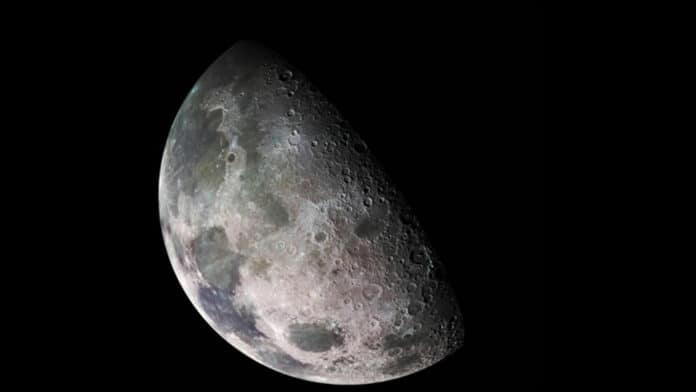Before now, most scientific attention has been on the impact of high-energy ions on the weathering of the Moon and other airless worlds in space. One of the main ways that water is thought to have formed on the Moon is through the solar wind, which is supposed to be composed of high-energy particles like protons and bombards the lunar surface.
High energy electrons in Earth’s plasma sheet, an area of trapped charged particles within the magnetosphere, an area of space around Earth controlled by the planet’s magnetic field, have been found to contribute to weathering processes on the Moon’s surface and may have helped the formation of water on the lunar surface, according to a recent study led by planetary scientist Shuai Li of the University of Hawai’i at Manoa.
The magnetosphere shields Earth from solar radiation damage and space weathering. The solar wind pushes and reshapes the magnetosphere, creating a long tail on the night side. This magnetotail has an area called the plasma sheet that is made up of very energetic electrons and ions that could have come from Earth or the solar wind.
Li, an assistant researcher in the UH Mānoa School of Ocean and Earth Science and Technology, was interested in examining the changes in surface weathering as the Moon passes through Earth’s magnetotail. This area completely shields the Moon from solar wind but not from the Sun’s light photons. This was based on his earlier work that demonstrated oxygen in Earth’s magnetotail is rusting iron in the Moon’s polar regions.
This offers a natural laboratory for researching how lunar surface water is formed, according to Li. The lunar surface gets bombarded by solar wind when the Moon is outside the magnetotail. There are hardly any solar wind protons inside the magnetotail, and water production was predicted to be nonexistent.
The Moon Mineralogy Mapper instrument aboard India’s Chandrayaan 1 spacecraft obtained remote sensing data between 2008 and 2009, which Li and co-authors evaluated. They specifically evaluated the variations in water production as the Moon passed through the plasma sheet and magnetotail of Earth.
Li said, “To my surprise, the remote sensing observations showed that the water formation in Earth’s magnetotail is almost identical to when the Moon was outside the Earth’s magnetotail. This indicates that, in the magnetotail, there may be additional formation processes or new water sources not directly associated with the implantation of solar wind protons. In particular, radiation by high energy electrons exhibits similar effects to solar wind protons.”
“Altogether, this finding and my previous findings of rusty lunar poles indicate that the mother Earth is strongly tied with its Moon in many unrecognized aspects.”
Scientists plan to work on a lunar mission through NASA’s Artemis program to monitor the plasma environment and water content on the lunar polar surface when the Moon is at different phases during the traverse of the Earth’s magnetotail.
Journal Reference:
- Li, S., Poppe, A.R., Orlando, T.M. et al. Formation of lunar surface water associated with high-energy electrons in Earth’s magnetotail. Nat Astron (2023). DOI: 10.1038/s41550-023-02081-y
